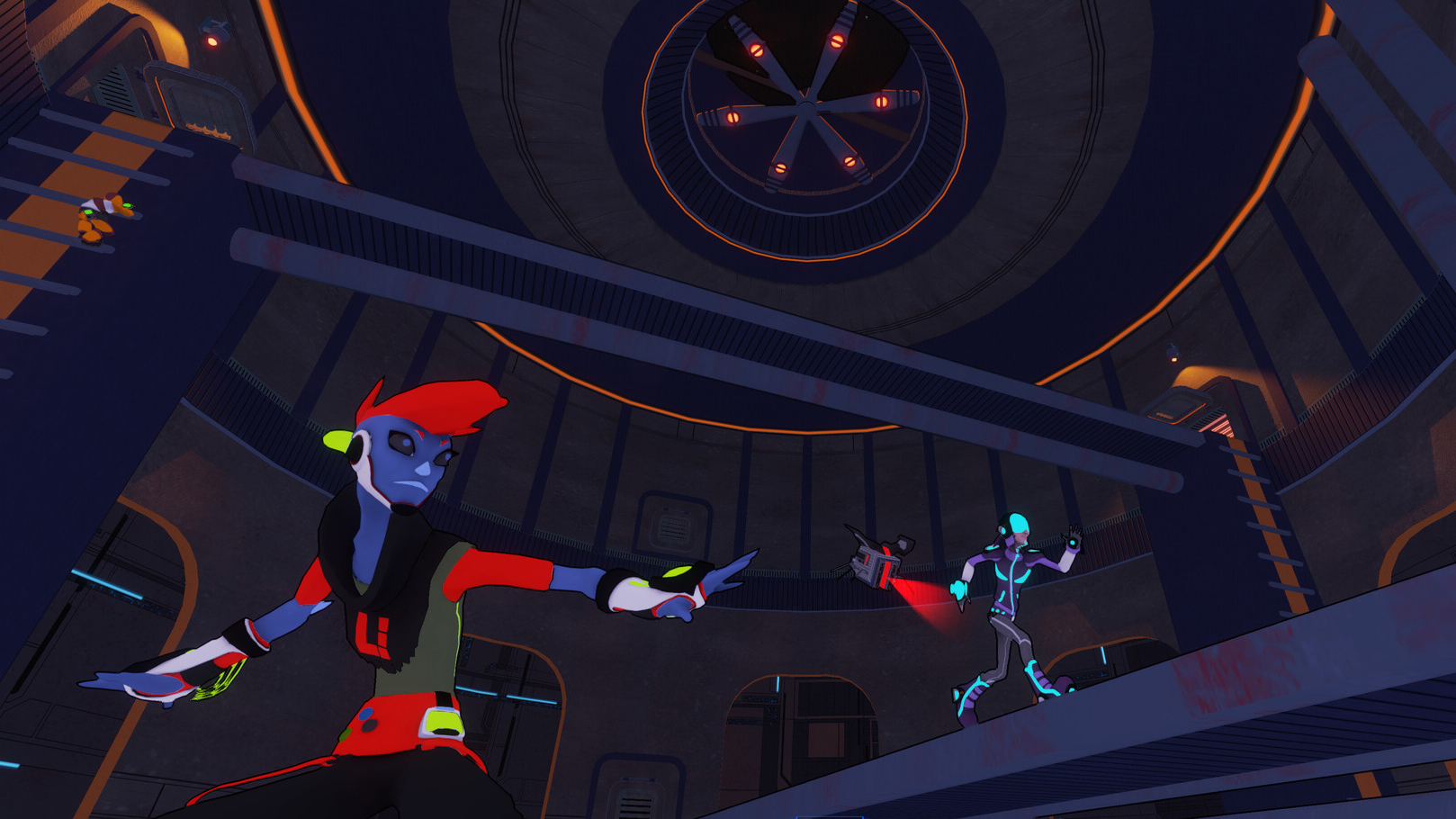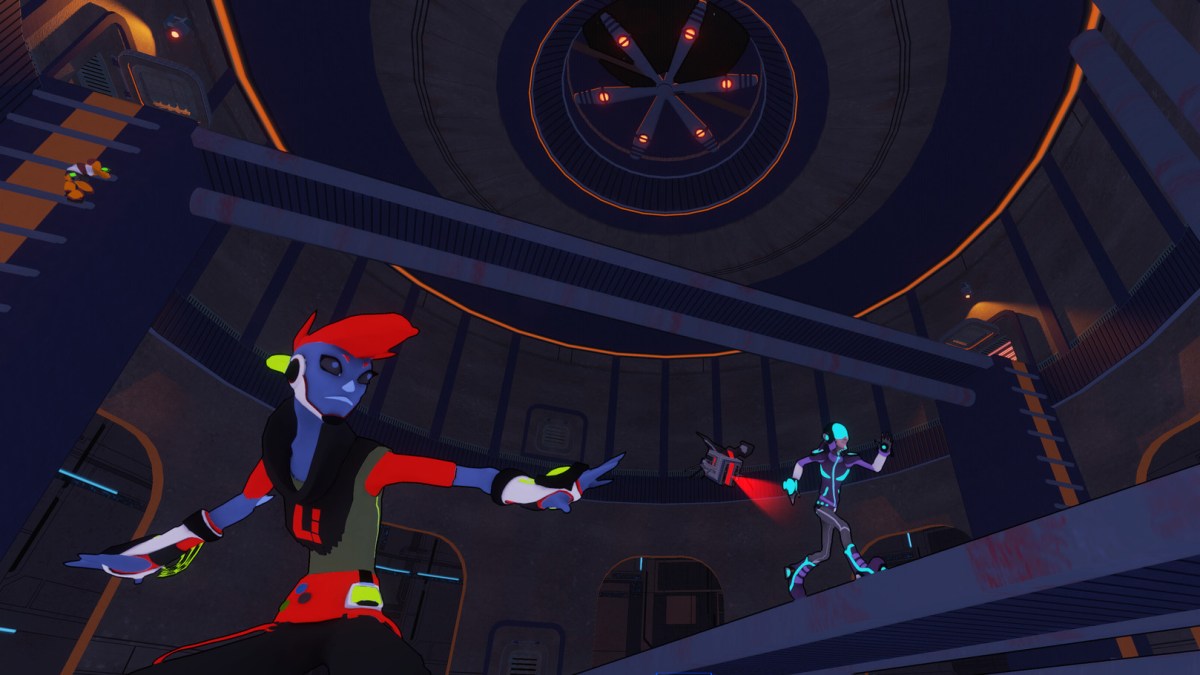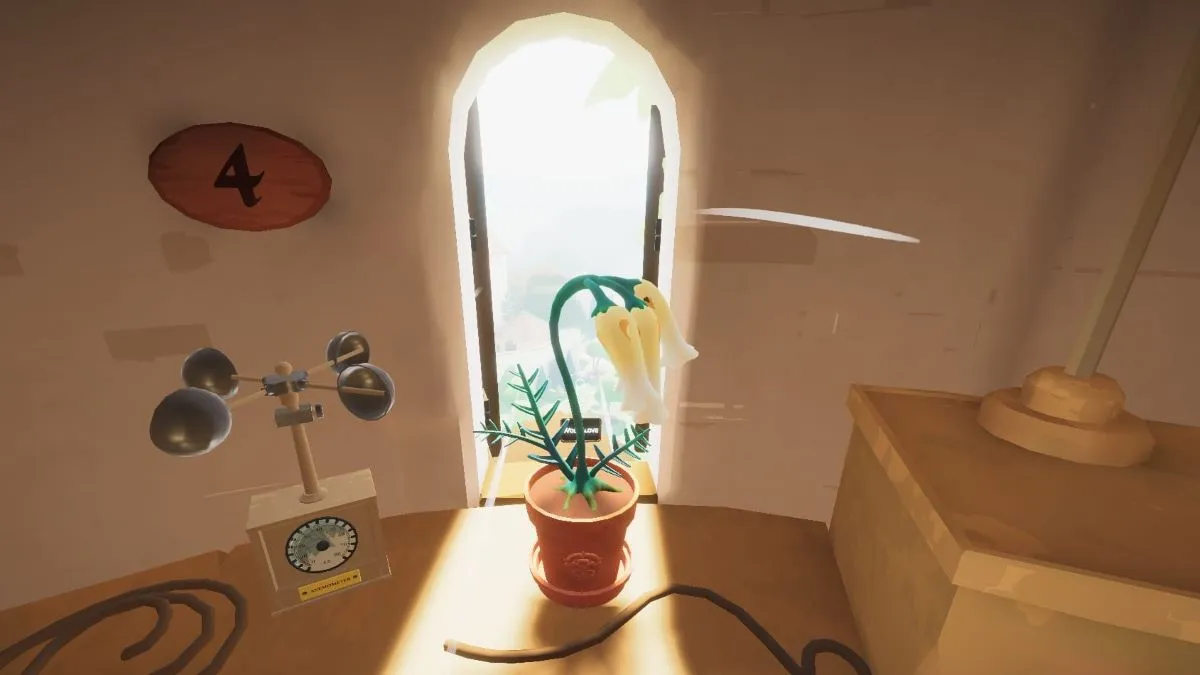Strong competitor for 2017’s worst name
I tend to avoid direct comparisons when analyzing a video game, but the fact that Hover: Revolt of Gamers proudly exclaims its relationship with Jet Set Radio, it becomes inevitable. It plays on the nostalgia heartstrings pretty hard, even getting composer Hideki Naganuma to contribute a couple of tracks.
Jet Set Radio is my favorite game of all time, so I jumped headfirst into Hover (I am never using that full title ever again) with a giant grin on my face, excited for what awaited me. After all, JSR is quite old and the controls don’t hold up as well as I’d like, so there’s lots of room for improvement. While the controls are definitely better here, I can’t say the same for everything else.

Hover: Revolt of Gamers (Linux, Mac, Windows [reviewed])
Developer: Midgar Studio, Fusty Game
Publisher: PLAYDIUS Ent., Plug in Digital, The Sidekicks
Released: May 31, 2017
MSRP: $19.99
The core movement mechanics of Hover feel great. It’s exciting to grind and wall-ride around the environment while taking in the visuals and looking for quicker or more exciting routes. When everything clicks, oh boy does it look great. Flipping and grinding all over the place is stylish and exhilarating, as it is often done way above the ground due to the vertical nature of the maps. That being said, it’s not all peaches and roses.
I can’t begin to count how many times I’ve mashed jump in an attempt to get up to a ledge or over a vertical obstacle. The character will auto-latch to ledges, and occasionally a ledge is just out of jump height range, so the process usually becomes an attempt to jump into the wall, wall-jump, and hope that the physics works out such that the character grabs the ledge. Other times, the geography and geometry of the world just don’t work out well. There have been a few instances of being “in the zone,” only to jump and trick directly into a random low-hanging wall or bar that kills everything.
Luckily, a key feature of Hover is its ability to rewind and “undo” mistakes. This is very handy during races or just standard navigation when a wrong jump or unexpected geometry gets in the way and causes a huge fall down to the bottom of the map. The rewind function allows players to reverse time for up to about eight seconds and course-correct big mistakes. This is a great quality-of-life feature to have, although it forces the player to drop what they’re holding, so it’s useless in certain situations and modes.
The tutorial does a decent job of introducing the movement mechanics but leaves a lot to be desired overall. A handful of mechanics are not even remotely explained in the tutorial, leaving players with a lot of confusion and frustration when missions ask something of the player previously unexplained by the game itself. On top of all this, the player must complete the tutorial every time a new character is created. While I understand this concept canonically (players are freshly created clones), it is an absolutely frustrating practice. There is at least a way to skip most of it, but it’s completely hidden and if they didn’t add an achievement mentioning it, I would have never known.
It’s because of the solid gameplay mechanics that the racing missions are so much of a success. They take the player around to places they may not have been or explored quite yet, and the checkpoints direct the player into specific paths, purposefully showing off one route or another. Eventually, you’ll find yourself thinking “Oh, I’ve been here before! I can head this way to get to where I need to go” because of a previous race.
Unfortunately, the other mission types aren’t as exciting. The biggest mission type outside of races is Gameball. A ball drops in the center of the arena, and each player must defend their goal while simultaneously trying to score on the opponent’s goal. In theory, players are using their movement skills and abilities to outmaneuver their opponent(s) and throw the ball into the goal. In my experience, when playing against AI or other humans, everything just takes way too long and nothing feels particularly strategic. These missions are mandatory to progress, but if the character you play as isn’t specialized in throwing or other stats related to the game type, it can become a chore. The developer has commented that the intention is to create a character that does specialize in this area, but doing so begins to feel monotonous.

Unlocking characters involves completing their string of missions; the missions for a particular character are usually the same type. I get that they have their own specialties, but doing these missions in order starts to feel like a huge drag, especially if the mission type isn’t particularly interesting. I prayed to any and all gods that would listen that each Gameball mission would be my last for the character unlock. Some missions have just about no direction and feel aimless and vague, resulting in frustration.
The game’s direction as a whole often feels aimless. There is a core set of missions to follow to advance the plot, but it’s easy to get lost and/or distracted by the plethora of other missions available. The plot isn’t set up strongly, and it more or less feels as if the player is just dumped into a random world filled with tons of meaningless missions. Again, the strength of the core gameplay and interesting visuals do a lot to alleviate the otherwise poor design, but it’s hard not to stare at the proverbial man behind the curtain and feel disappointed. It doesn’t help that bugs have erased and halted my progress more than once.
Creating characters is an interesting experience. At first, players can only choose a generic hooded person who has no personality at all. As mentioned, it’s possible to unlock more by completing a string of missions from the NPC. These characters come with specialties, usually related to their mission type. Players can customize height and colors to make them unique, and as they level, they can add modifiers that adjust the way they play. Leveling up unlocks new “slots” that can have modifier chips added to them, adjusting percentages and numbers in various areas. These modifier chips are unlocked by completing missions and searching the environment. For example, players may want to specialize in jump height, adding small and large modifier chips into as many slots as possible.

There are definitely improvements to the Jet Set Radio formula here. As I mentioned, the controls work great, though the mission content is often lacking. You can spray-paint, but it amounts to clicking the mouse a lot over the area to paint — no more mini-game. The style is there, but a bit faded compared to its inspiration. The anti-authoritarian vibe is also present, but it feels very forced due to the poor writing and general lack of plot emphasis. The couple of music tracks created by Naganuma are, of course, amazing, but it’s not enough to carry the weight of the entire game on its back.
Hover ends up as a game that’s a blast to maneuver around and explore but becomes at odds with its own design. There are a lot of peculiar decisions that make everything much more frustrating than it needs to be. Hover is something I desperately wanted to fall in love with, and although I’m happy to have been acquainted with it, we’ll be headed our separate ways moving forward.
[This review is based on a retail build of the game provided by the publisher.]





